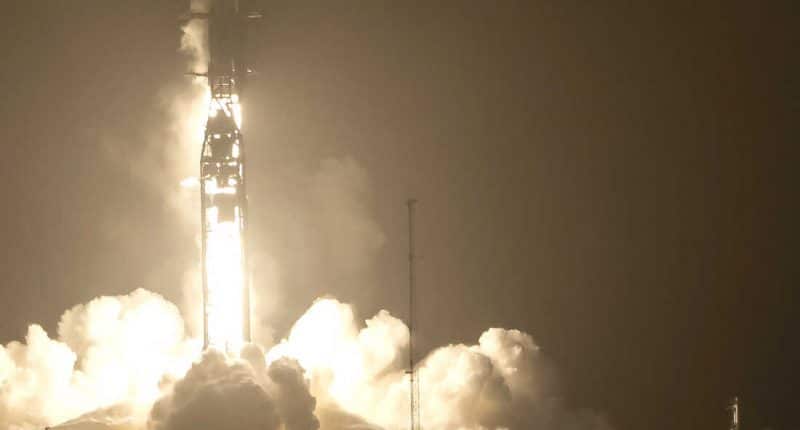If you have watched Mimi Leder’s film “Deep Impact,” where a manned spacecraft had been sent to space to alter the course of a comet which was headed on a collision course with Earth, then this might seem familiar to you. One of the notable differences is that our planet is not in danger this time, and the spacecraft that is being sent to space will be colliding with an asteroid.
That’s right, NASA has launched the Double Asteroid Redirection Test (DART), the world’s first planetary defence that will test technology to protect Earth against asteroids or comets. Launched on Wednesday at 1:21 AM EST on a SpaceX Falcon 9 rocket from Space Launch Complex 4 at the Vandenberg Space Force Base in California, the space probe will crash into the asteroid to alter its speed and course.
“Liftoff of the Falcon 9 and DART on NASA’s first planetary defense test to intentionally crash into an asteroid,” NASA spokesperson Marie Lewis said during a live broadcast of the launch. Nearly nine minutes after liftoff, the Falcon 9 recorded the 95th time that SpaceX has recovered an orbital class rocket booster as it returned to Earth, landing on SpaceX’s drone ship “Of Course I Still Love You.”
“DART is turning science fiction into science fact and is a testament to NASA’s proactivity and innovation for the benefit of all,” said NASA Administrator Bill Nelson. “In addition to all the ways NASA studies our universe and our home planet, we’re also working to protect that home, and this test will help prove out one viable way to protect our planet from a hazardous asteroid should one ever be discovered that is headed toward Earth.”
Do not worry, the asteroid (unlike the Wolf–Beiderman comet in “Deep Impact”) is not a threat to Earth, and this is merely a test to see if the technology can truly alter the orbit and speed of an asteroid, should one threaten the planet in the future. DART will impact a “moonlet” called Dimorphos (which is around 525 feet and orbits around Didymos, a larger asteroid that is around 2,500 feet in diameter) to shorten its orbit by several minutes.
If either of the two actually hit Earth, then the devastation would be continent-wide. DART will intercept the Didymos system between September 26 and October 1, 2022, crashing into Dimorphos at roughly 4 miles per second. For now, DART will be traveling just outside Earth’s orbit around the Sun (for the next 10 months), until Didymos and Dimorphos will be around 11 million kilometres from Earth.
Before DART collides with Dimorphos, it will release LICIACube, a CubeSat that is riding with DART and is provided by the Italian Space Agency (ASI), to capture images of the impact and the resulting cloud of ejected matter.
The Tech Portal is published by Blue Box Media Private Limited. Our investors have no influence over our reporting. Read our full Ownership and Funding Disclosure →





